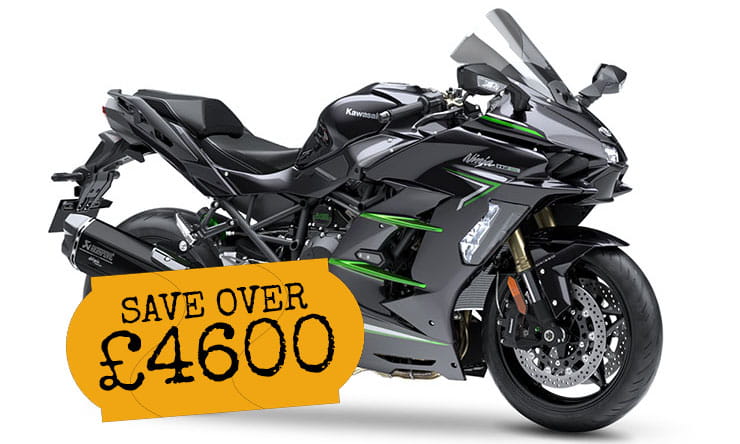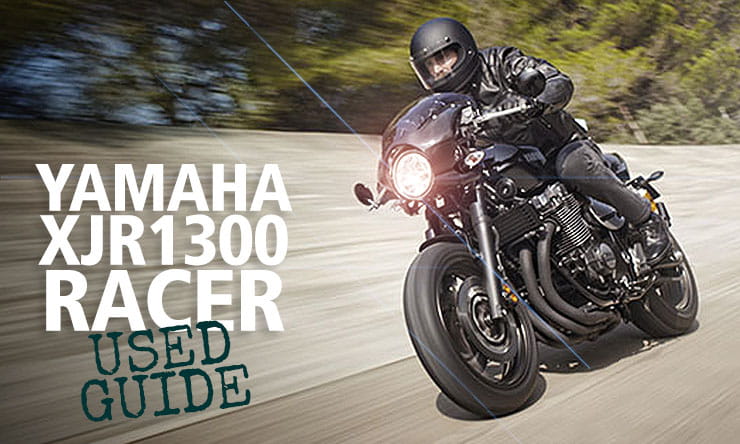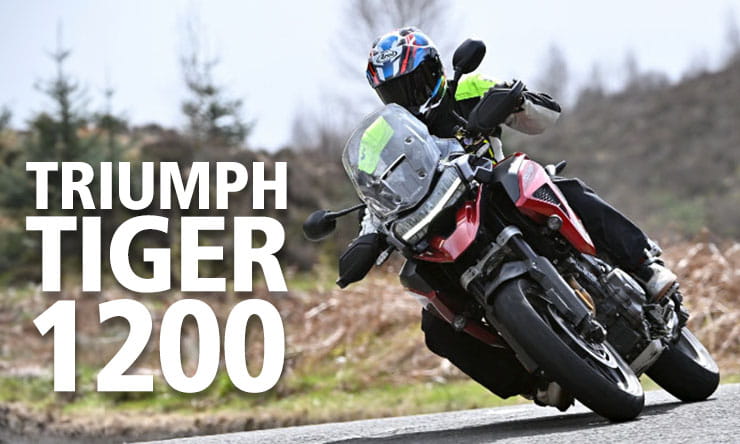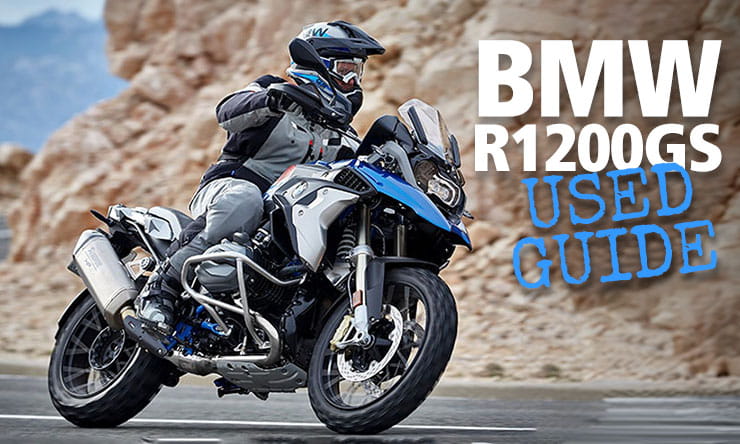Yamaha FJR1300 (2001-current): Why you want it
The FJR1300 has been a huge success for Yamaha down the years, with over 120,000 of them sold worldwide so far. Introduced as a fast sports tourer way back in 2001, it's evolved gently ever since, and goes into its twentieth year in the range with a look that's recognizable from the first models, but an air of sophistication and a suite of electronics that we could only have dreamed of at the start of the century. At its heart is a beautifully, creamily-smooth inline four engine with bags of low and mid-range grunt, allied to fuss-free shaft drive and a stable, but surprisingly nimble chassis based on an aluminium twin-spar frame with fully adjustable forks and a rear shock with remote preload adjuster. Earlier models were criticised for having a five-speed gearbox which was a little undergeared for fast motorway cruising. Yamaha were adamant that it wasn't possible to fit a six-speed box, but then did precisely that for 2016... Weather protection is excellent, and comfort is too, whether solo or two up, although the rear suspension's a little soft for fully loaded two-up use as standard. Bizarrely for a sports tourer, Yamaha insist you can't use a top box if you're using panniers, and vice versa. This is clearly nonsense, and pretty much everyone does just that with no problems.
Over the years, the FJR has built up an enviable reputation for reliability, as well as being known for low running costs (for a big sports tourer, that is) and easy home servicing. Owners love them and there's a flourishing online community as well as a physical owners' club which is well worth joining.
Next year's mildly updated version will be the FJR's final incarnation before being replaced with something entirely new (assassinated by emissions rules rather than dying of natural causes), so with existing owners contemplating a last-chance trade-up, now's the time to explore the FJR's good and bad points on the used market.
.ashx?h=493&la=en&w=740&hash=3A41179DAC004B0E5C1603B4EC8EABAE2461A315)
What to look for
FJRs tend to be well looked-after, so the first thing to be wary of is obvious cosmetic neglect – there are plenty available so don't get lumbered with a tatty one unless you're just looking for a cheap hack. Even on cosmetically shiny examples, though, you need to have a good delve under the skin. The most common problem with all models is rear suspension linkages seizing up due to lack of grease. They're hard to get at so owners often neglect them, and that can be disastrous – if they seize completely the tie rods can break, and the whole rear end collapses completely. Not nice. Assume any used FJR will need this doing soon, unless the seller can produce bills (the owners' club will do it for you for under £70) or evidence it's been done recently. The rear shock is soft as standard, especially on pre-2013 bikes. Specialists can re-spring and re-valve, but you're probably best off fitting a decent aftermarket unit.
Reliability is excellent, and you're far more likely to find problems coming from electrical glitches than mechanical mayhem. The usual culprit is the earth system – the 'spider' connectors on the frame corrode and connections partially fail, causing all sorts of irritating and often intermittent problems. Savvy owners remove the connectors and make up new earths, ideally taken all the way back to the battery negative.
Rough running at idle and vibration in the midrange are often down to poor throttle body synchronisation – care taken with this at service time will make a big difference. Odd misfires, especially combined with the clock needles fluctuating wildly or sweeping the whole dial while riding, can be down to a failing battery. Check the alternator output before buying a new one though – it might be on the way out.
But what about the engine, you may ask. What about it? Given regular oil changes, these motors will go on for ever – we know of FJRs with well over 150,000 miles and still going strong. The owners' club will tell you of bikes which haven't even needed the valves adjusting 'til 100,000 miles. That said, you do still need to check valve clearances – there are a few tales of premature valve seat recession, possibly linked to hard use with cheap unleaded fuel. The only thing to watch out for is camchain tensioner problems on very early bikes – signalled by a tapping from the right side of the motor. The updated part from later engines cures this completely. The clutch needs bleeding through regularly as the fluid gets cooked, but the clutch mechanism itself rarely gives trouble. The gearbox is a bit ponderous, and you have to just live with that – force it to shift quickly and you'll cause expensive wear to the selector forks. On clutchless models, the computer can get confused and jam in one gear. Try disconnecting the battery for ten minutes - that might clear it.
.ashx?h=493&la=en&w=740&hash=6803EA671E34F4FC28C845D95959E9C06A4E6880)
Any updates
As you might imagine with such a long model life, there have been lots of minor updates, and a couple of biggies. The original 2001-2 model was updated in 2003 with a taller screen, bigger brakes and better suspension. An ABS model also appeared (called the FJR1300A, funnily enough). For 2006, the 'Gen 2' model brought adjustable handlebars and seat, an even taller screen, and factory-fitted colour matched panniers. ABS was now standard and semi-linked brakes made their first appearance – applying the front doesn't apply any rear, but the rear pedal also operates a couple of pistons at the front, for better balance. Also in 2006, a semi-automatic, clutchless gearbox was introduced on the FJR1300AS. There were some updates to engine management software around 2007-2009, and heated grips became standard in 2012.
The 'Gen 3' from 2013 saw a major restyle, as well as ride-by-wire electronics, switchable engine modes and traction control, and the welcome addition of cruise control. The AS model got upside down forks and electronic suspension adjustment.
For 2016, there were three separate models. The 1300A got an overdrive sixth gear at last, as well as better suspension, new clocks, and LED headlights, as well as a new slip/assist clutch. The AE had all that, plus electronically adjustable suspension (with upside down forks), and cornering headlights. The AS takes the same spec as the AE but with the clutchless gearbox.
For 2020 the A model will be dropped and the AE and AS get a special (appropriately funereal, to mark their impending demise...) paintjob, predominantly black but with gold wheels and accents.
.ashx?h=493&la=en&w=740&hash=BB2A039EE32F6A82EE666F0D0B8F7BD64A32EA1F)
What to pay for a Yamaha FJR1300 (2001-current):
You can get a high mileage, early FJR for under two grand, but you're probably better off saving up a bit more and having a better choice from about £2500. With each update the FJR gets that little bit better, with the Gen 2 (starting at around four grand) significantly better than the original, and the Gen 3 a big step on. Gen 3s start at around £6000 for a fairly high mileage example, but as we've seen, don't let the mileage put you off – condition and evidence of caring ownership are far more important. If you want the sixth gear fitted from 2016 on, you might find one from around £7500, but more likely starting around £8000. Electronic suspension is a bonus if fitted, but we wouldn't want to pay too much extra. We definitely wouldn't pay extra for the clutchless version. Beware paying over the odds for very recent, low mileage FJRs. There are already plenty of pre-reg and unregistered 2019 models looking for homes, and dealers will be keen to dump stock before the final edition models arrive in the spring, so a bit of inspired haggling could net you a new bike for used money.
Who to ask
If you own an FJR – or even if you're just thinking about it – you need to make friends with the FJ/FJR owner's club. What they don't know about these bikes just isn't worth knowing. That goes double if you're close enough to their Gloucestershire base to take advantage of their extremely competitive workshop rates (servicing from just £36 plus parts, for example). Find them at www.fjclub.co.uk or via the forum at www.fjrbiker.co.uk Membership also gives you access to discount spare parts via www.fjrcatalogue.com
Yamaha FJR1300 (2001-current) spec
|
Used price
|
From £2000-£11,000
|
|
Capacity
|
1298cc
|
|
Bore x Stroke
|
79 x 66.2mm
|
|
Engine layout
|
Inline four
|
|
Engine details
|
Liquid cooled, 16v, DOHC
|
|
Power
|
141bhp (104kW) @ 8000rpm (2016 on: 144bhp)
|
|
Torque
|
99 lb-ft (134Nm) @ 7000rpm (2016 on: 102 lb-ft)
|
|
Top speed
|
150+mph
|
|
Transmission
|
5 speed, shaft drive (2016-on: 6 speed)
|
|
Average fuel consumption
|
48mpg tested
|
|
Tank size
|
25 litres
|
|
Max range to empty (theoretical)
|
264 miles
|
|
Reserve capacity
|
n/a
|
|
Frame
|
Aluminium twin spar
|
|
Front suspension
|
Conventional telescopic forks (AE and AS models: upside down forks
|
|
Front suspension adjustment
|
Fully adjustable (AE and AS models: electronic adjustment)
|
|
Rear suspension
|
Monoshock
|
|
Rear suspension adjustment
|
Preload and rebound (AE and AS models: electronic adjustment)
|
|
Front brake
|
320mm discs, four piston calipers (ABS optional from 2003, standard from 2006, linked brakes from 2006)
|
|
Rear brake
|
282mm disc, two-piston caliper (ABS as above)
|
|
Front tyre
|
120/70 ZR17
|
|
Rear tyre
|
180/55 ZR17
|
|
Rake/Trail
|
26°/102mm
|
|
Dimensions
|
2230mm x 750mm 1325mm (LxWxH)
|
|
Wheelbase
|
1550mm
|
|
Ground clearance
|
130mm
|
|
Seat height
|
805mm (adjustable +/- 10mm)
|
|
Kerb weight
|
292kg
|
Looking for motorcycle insurance? Get a quote for this motorbike with Bennetts bike insurance



.ashx?h=493&la=en&w=740&hash=26E090A340F355596E66103B13E1CDB4ED4D3EBE)
.ashx?h=493&la=en&w=740&hash=9C1E3BD045D423927A83C2F1931ED45FC8607893)
.ashx?h=493&la=en&w=740&hash=A193EABEFBD1682D047A12C7D8BCCB6A783D0FBA)
.ashx?h=493&la=en&w=740&hash=3A41179DAC004B0E5C1603B4EC8EABAE2461A315)
.ashx?h=493&la=en&w=740&hash=6803EA671E34F4FC28C845D95959E9C06A4E6880)
.ashx?h=493&la=en&w=740&hash=BB2A039EE32F6A82EE666F0D0B8F7BD64A32EA1F)



